In just five short years, two scorching albums, and hundreds of electrifying, shock-rock performances (think fake blood and straightjackets like Ozzy, Cooper, and Manson), Starcrawler has earned big-named fans like Elton John, Dave Grohl, Mike Campbell, and Ryan Adams. (The latter produced their 2018 self-titled debut featuring Beck's daughter Tuesday on the cover. Both of them are fans, too.)
Much of Starcrawler's glam-punk swagger is due to the peanut-butter-and-jelly relationship between singer Arrow de Wilde and guitarist Henri Cash. His prickly guitars and redlined Ramones rhythms flank her seething, sneering, sensual vocals making every second of Starcrawler's 28 minutes a gas. And most of it was done on three strings.
"Having three strings allows me to just play," admits Cash. "Half the strings, half the brain power [laughs]… I'm so used to the 3-string setup that it feels natural and I don't think about anything."
2019's follow-up Devour You maintained the daring Stooges' snarl, but incorporated slower tempos and B-Bender moans for the Let It Bleed-esque "No More Pennies" and dream-pop swirler "Born Asleep." The result is still an overall good-time ruckus, but the occasional change of pace makes the faster-paced uppercuts hit harder.
In between recording fresh material for Starcrawler and a new project, gear-gobbling guitarist Henri Cash virtually welcomed PG's Chris Kies into his L.A.-based tone zone.
In this episode, the sharp-dressed man shows off his main custom builds from Randy Parsons (including a 3-string ripper), induces serious gear lust with his collection of Fenders, Gretsches, and Gibsons, and shows off the degrees of burn bustling on his board.
Special thanks to Vice Cooler for all of Henri's video and photography.
[Brought to you by D'Addario Auto Lock Straps: https://ddar.io/AutoLockRR]3-String Parsons White Bat
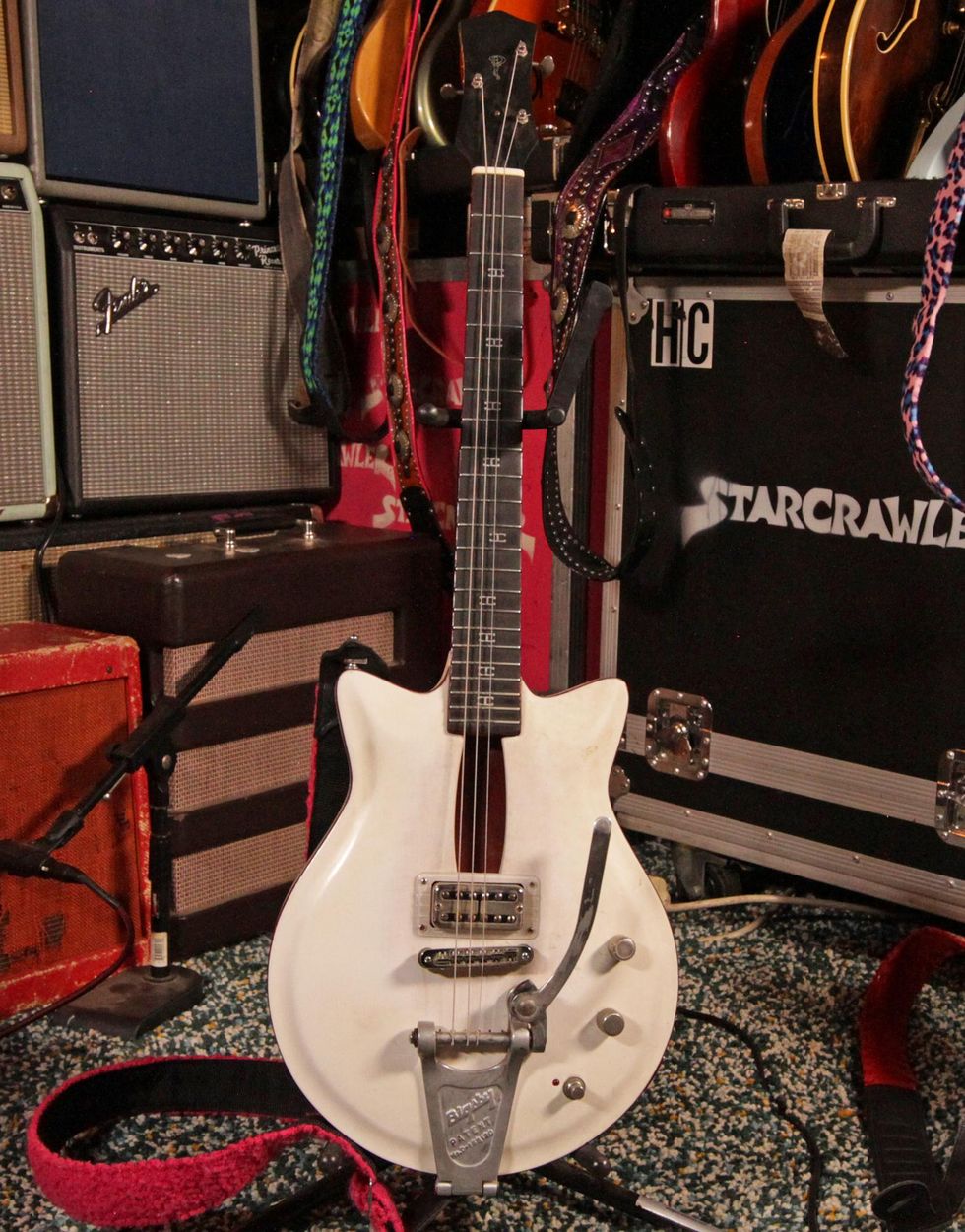
Harlan Howard described country music as "three chords and the truth." For Starcrawler guitarist Henri Cash, it's "three strings and the power."
Above is Cash's custom-made, 3-string "White Bat" built by esteemed luthier Randy Parsons who has delivered jaw-dropping instruments for Jack White, Jimmy Page, and Joe Perry.
About four years ago, Cash first encountered the Seattle-based builder's work at a NAMM Show when his aunt—custom strapmaker Jodi Head—and Parsons were booth neighbors. Throughout the show, they bonded over music and unusual instruments. At the close, Randy offered to build Henri a custom White Bat model.
The key elements making it his dream machine (a cross of his beloved White Falcon and Randy's original Bat) would be the single TV Jones Power'Tron Plus (Cash only uses the bridge pickup in any guitar), a built-in R2R Treble Booster (approximating the onboard 9V boost found in late 1960s Gretsch Rally models), and a Bigsby vibrato (huge Neil Young fan). For this one, he actually uses partial sets of Ernie Ball Baritone Slinkys (.026–.036–.046).
Parsons White Bat
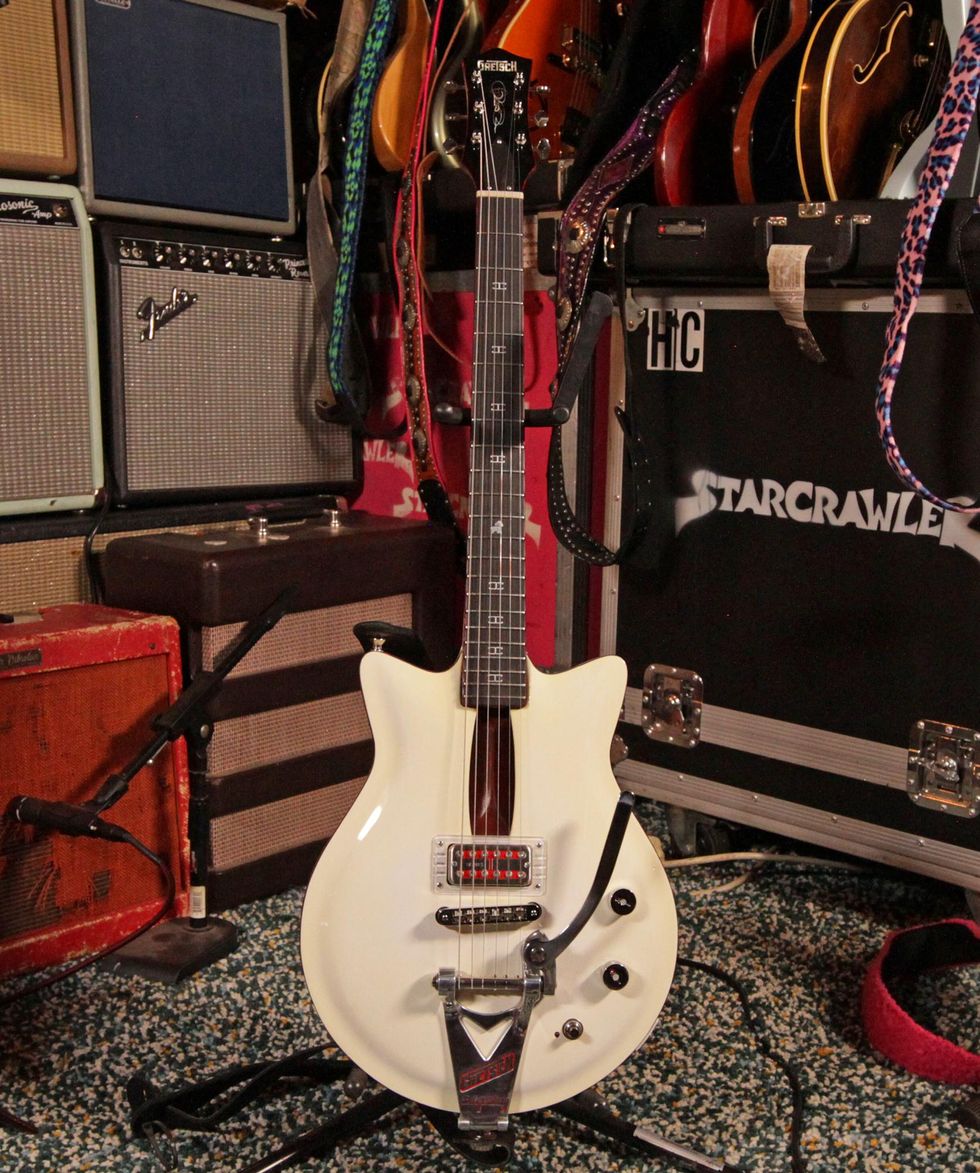
Here's a full-fledge, 6-string White Bat built by Randy Parsons. This one is chambered like the 3-string Bat and features all the same accoutrements. For his standard 6-strings, Henry goes with Ernie Ball Power Slinkys (.011–.048) for most guitars. (He puts Slinky .010s on his Les Pauls for "Skynyrd" bends.)
1980s Epiphone Les Paul
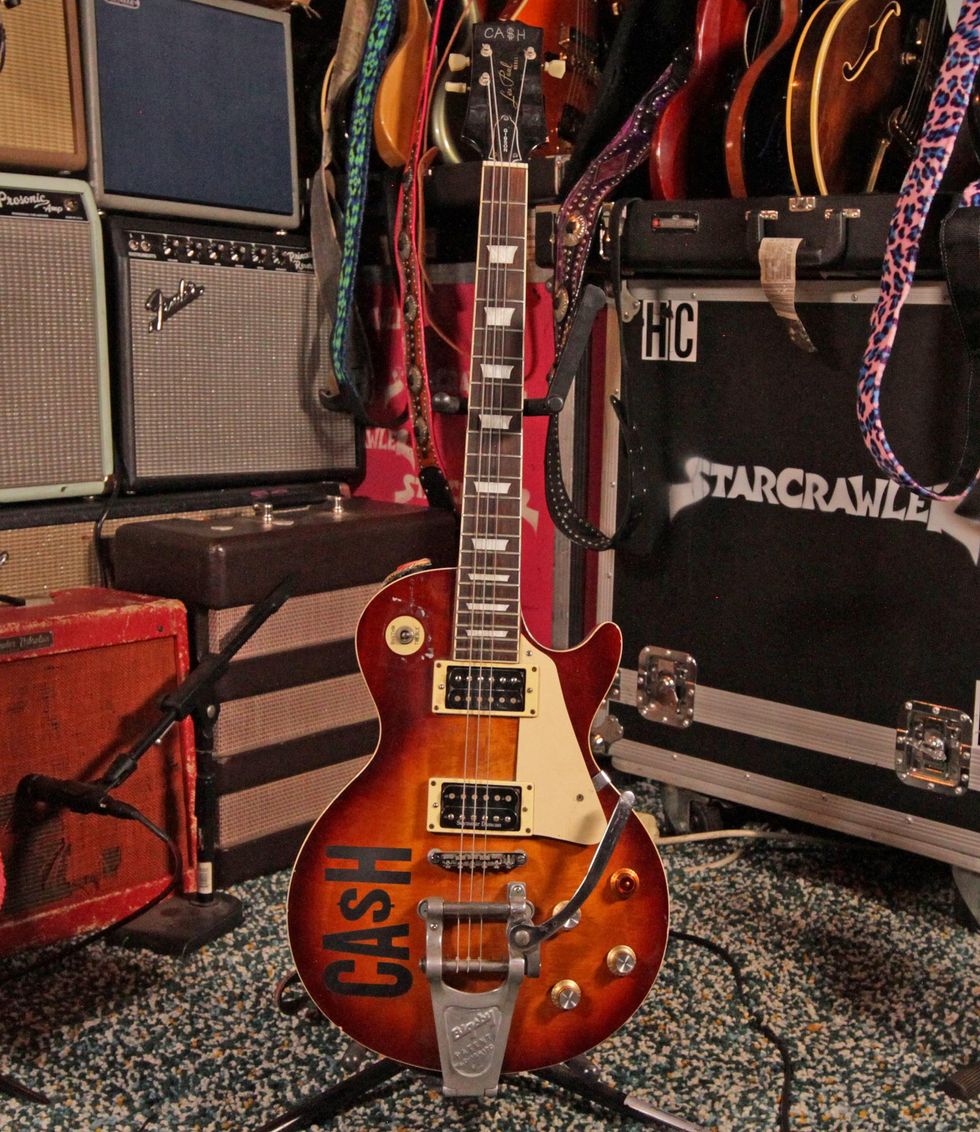
This 1980s Epiphone Les Paul is where all the 3-string raging started for Henri. His father is a musician and often plays in open tunings. He always tried to play his dad's instruments but couldn't quite grasp it until he broke the part of the Les Paul's bridge and saddles. Instead of taking it to his dad to fix, he removed the strings and quickly realized with the remaining top three strings (tuned to D–A–D), he could cop chords and compelling sounds.
His dad encouraged the musical pursuit knowing his son was a fan of other "mutated" players in the B-52s, Morphine, and The Presidents of the United States of America, but he did warn that if he was going to continue playing just three strings, he should move them further down the neck to balance out the tension. After that (and adding a Stones-y G–D–G tuning to his repertoire), Cash was off and riffing.
When schoolmate Arrow de Wilde approached Cash about playing guitar, he had only played drums and bass in previous bands, but he was interested and most of the early Starcrawler jams were written on this 3-string Epiphone.
1950s Gretsch 6130 Roundup
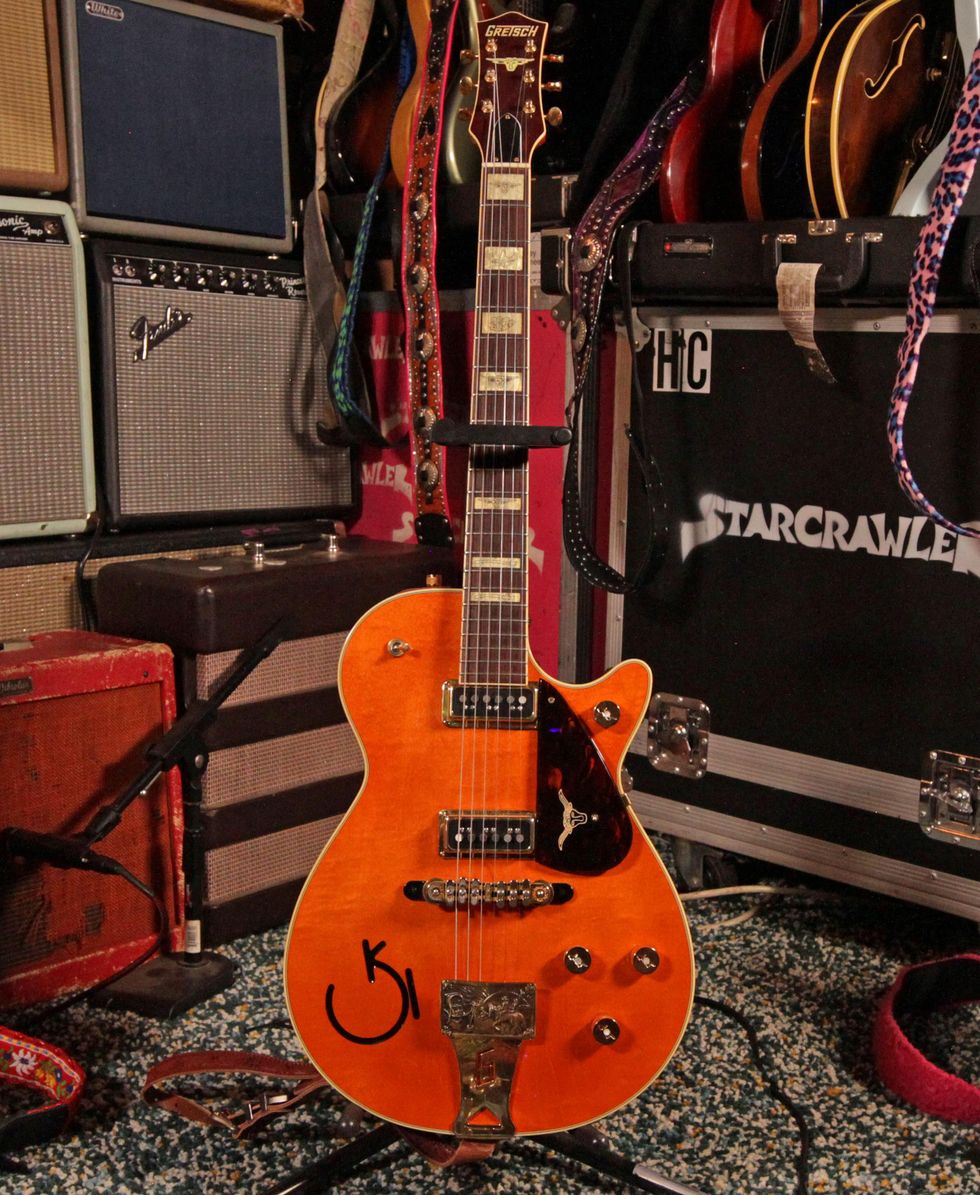
A recent addition to Cash's abundant collection is this 1950s Gretsch 6130 Roundup complete with the western motif and Dynasonic pickups.
Gretsch White Falcon
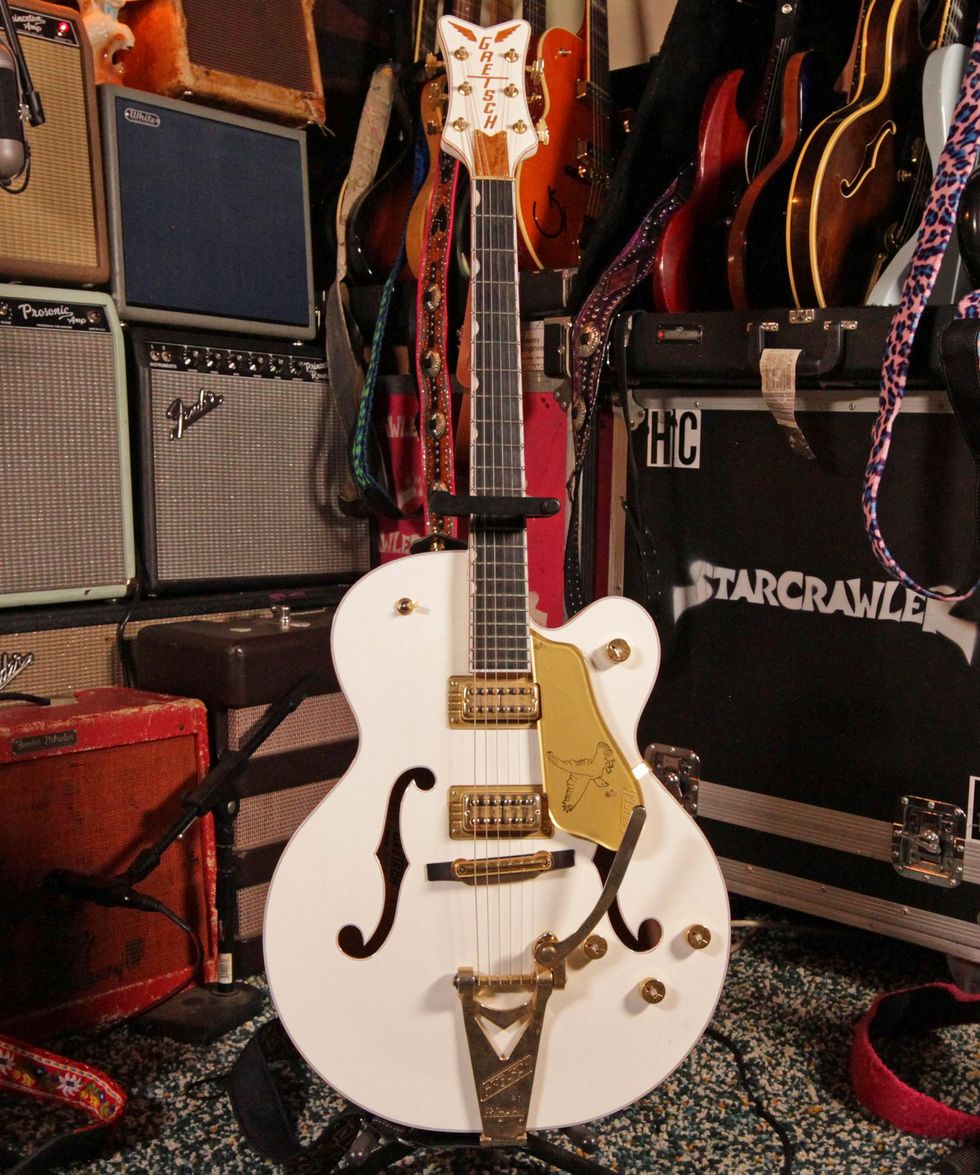
Another pivotal guitar used a bunch in the studio and onstage is this big, beautiful Gretsch White Falcon.
Fender Road Worn '50s Telecaster

Since getting it (and before falling for the Parsons), this Tele has probably logged the most hours by his side. He scooped this original-run Fender Road Worn '50s Telecaster at Imperial Vintage Guitars. It's worth noting that the original Road Worn relic'ing was relegated to just the neck, so all the body bruises and bashing has been added by Henri's hands. Starcrawler's 2018 self-titled debut featured mainly this Tele and the 3-string Parsons.
1970s Fender Telecaster Custom
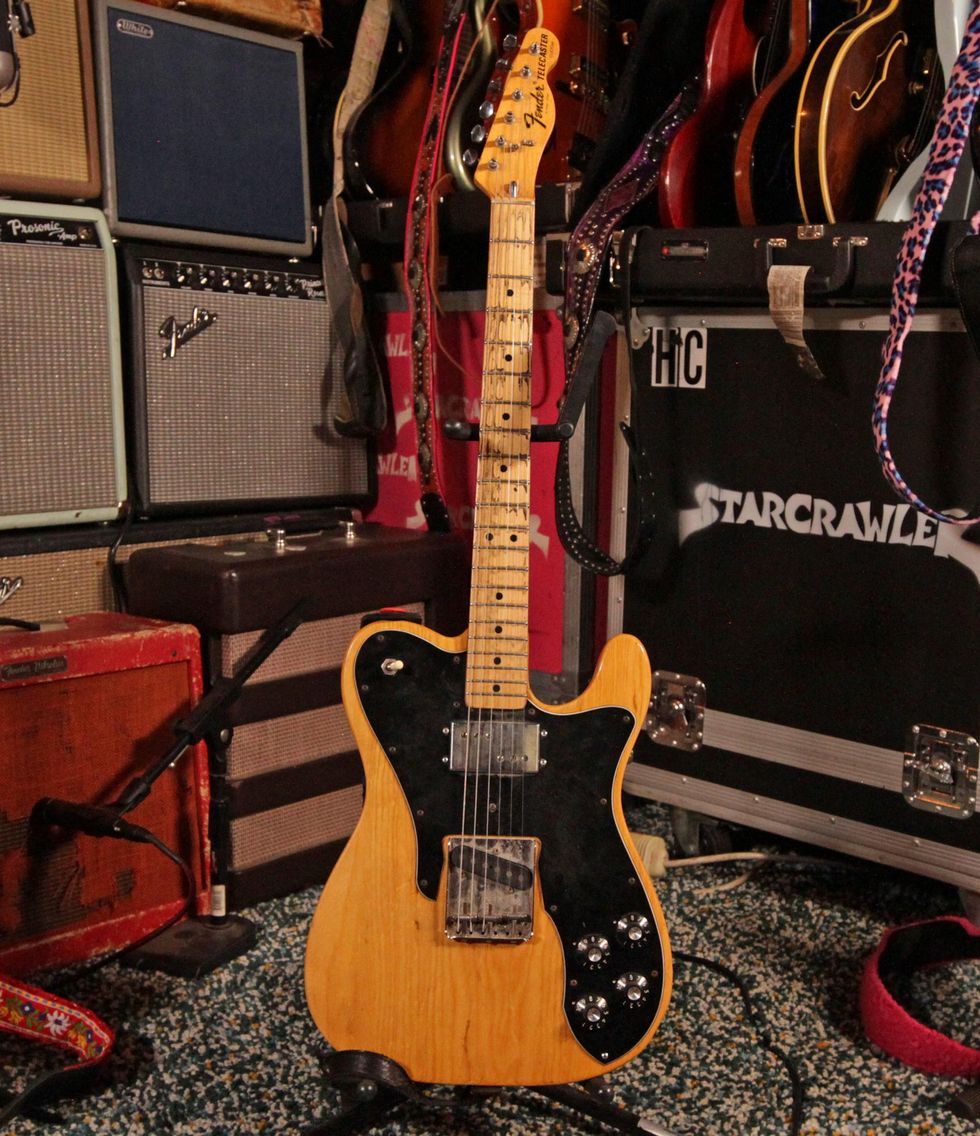
When Ryan Adams produced the band's first album, Cash fell in love with his 1974 Fender Tele Custom. At the time, he couldn't afford a vintage guitar (so he settled for the previous Road Worn Telecaster), but after saving some scratch and lurking on eBay, he landed this (at the time) clean Tele Custom.
He deemed it his No. 1 before heading out to support Starcrawler, but at the first show it screeched and scratched because the pickups weren't potted and Cash plays with lots of volume and gain. He went to Welcome to Mike & Mike's Guitar Bar in Seattle to have it serviced, but still needing to play that night's show, they dropped in a temporary fix—a Lollar Special T. The replacement sounded so good that Henri left it and has the now-wax-potted original single-coil in the guitar's case.MIM Fender Classic Series Tele with B-Bender
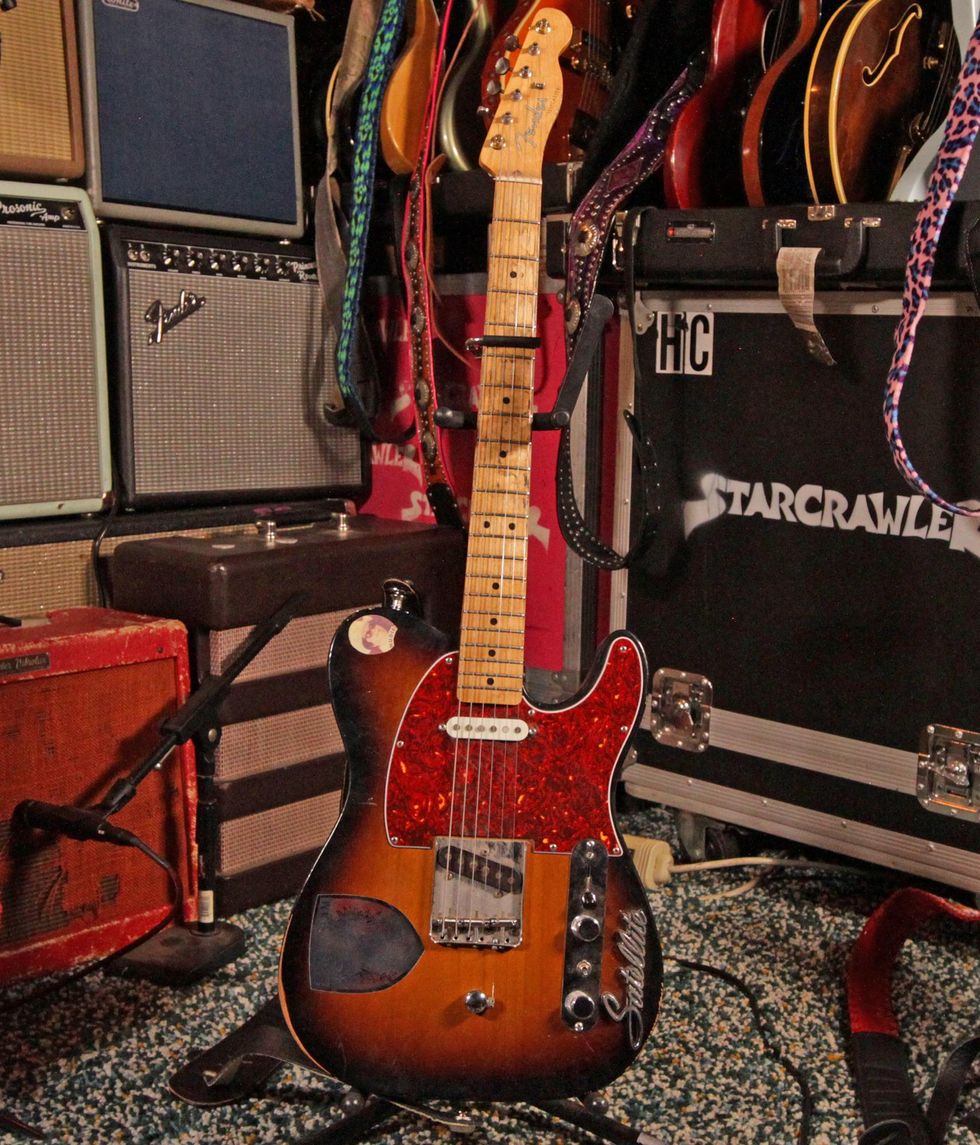
Thanks to his uncle Brad Rice (who's played guitar for and collaborated with Keith Urban, Ryan Adams, Jason Boland, Will Hoge, Ray Wylie Hubbard, Whiskeytown, and Jack Ingram) and falling in love with the Clarence White-era Byrds, Cash specifically scored this tobacco sunburst MIM Fender Classic Series Tele so he could recreate White's Parson StringBender (now owned by Marty Stuart). He even added the Nudie sticker (above the neck pickup) and swapped out the stock tuners for banjo tuners. He recorded with it and plays it onstage for the songs "No More Pennies" and "Born Asleep."
Satellite Coronet
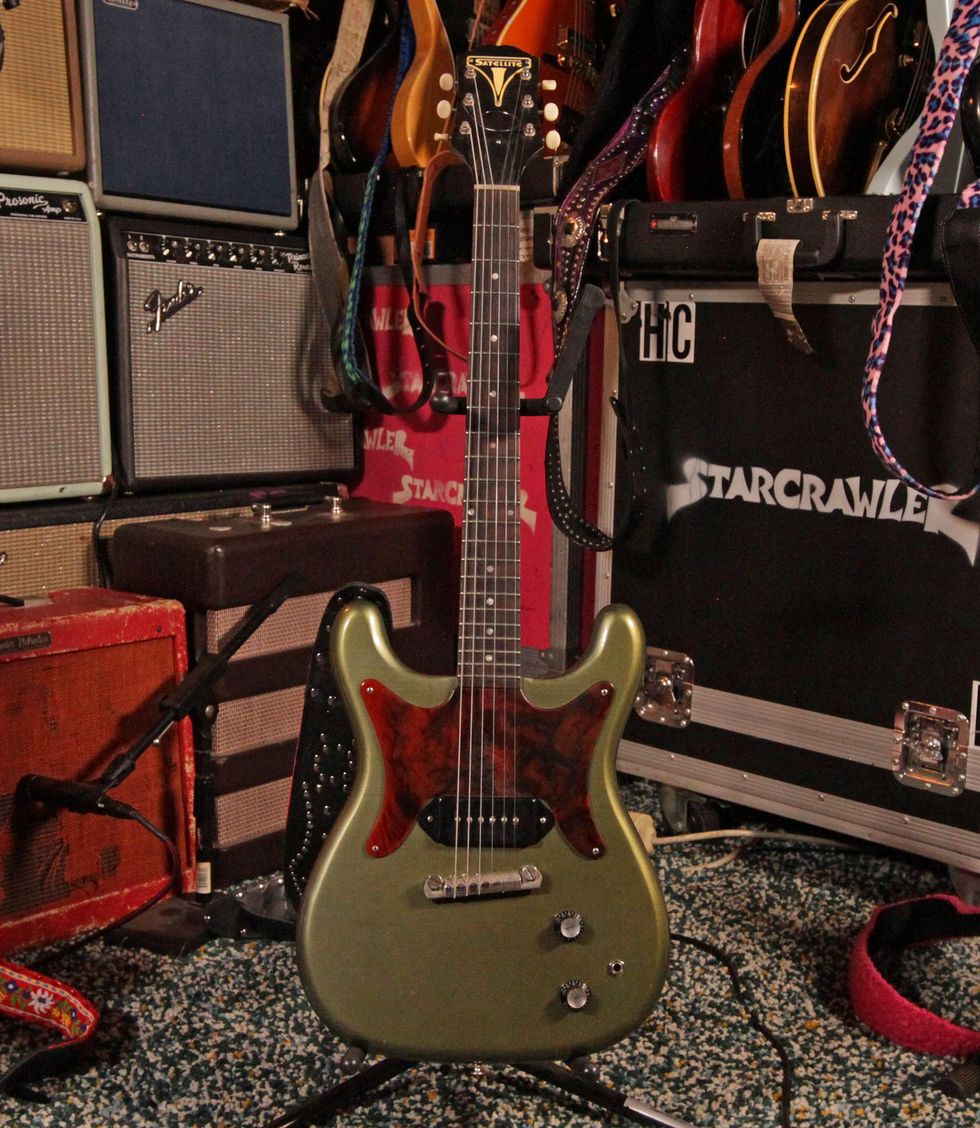
Some P-90 bark for the in-progress Starcrawler album was dished out by this Satellite Coronet that is now no longer in production because of a lawsuit issued by Gibson.
Custom Echopark Clarence
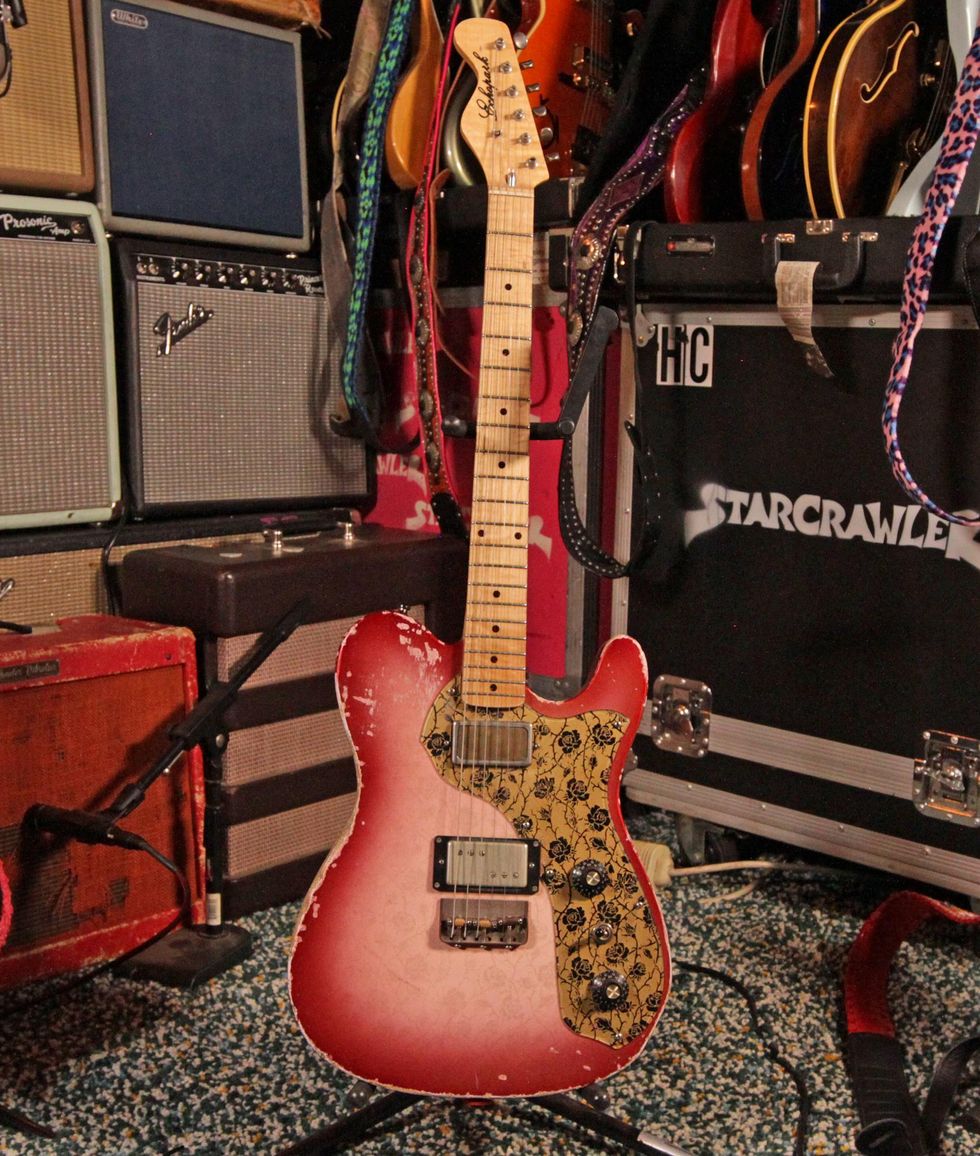
When opening for the Distillers, luthier Gabriel Currie gifted this custom Echopark Clarence model before a show in Detroit. A notable first happened with this T when Henri resuscitate it himself with a headstock repair while touring in Europe.
Kauer Banshee
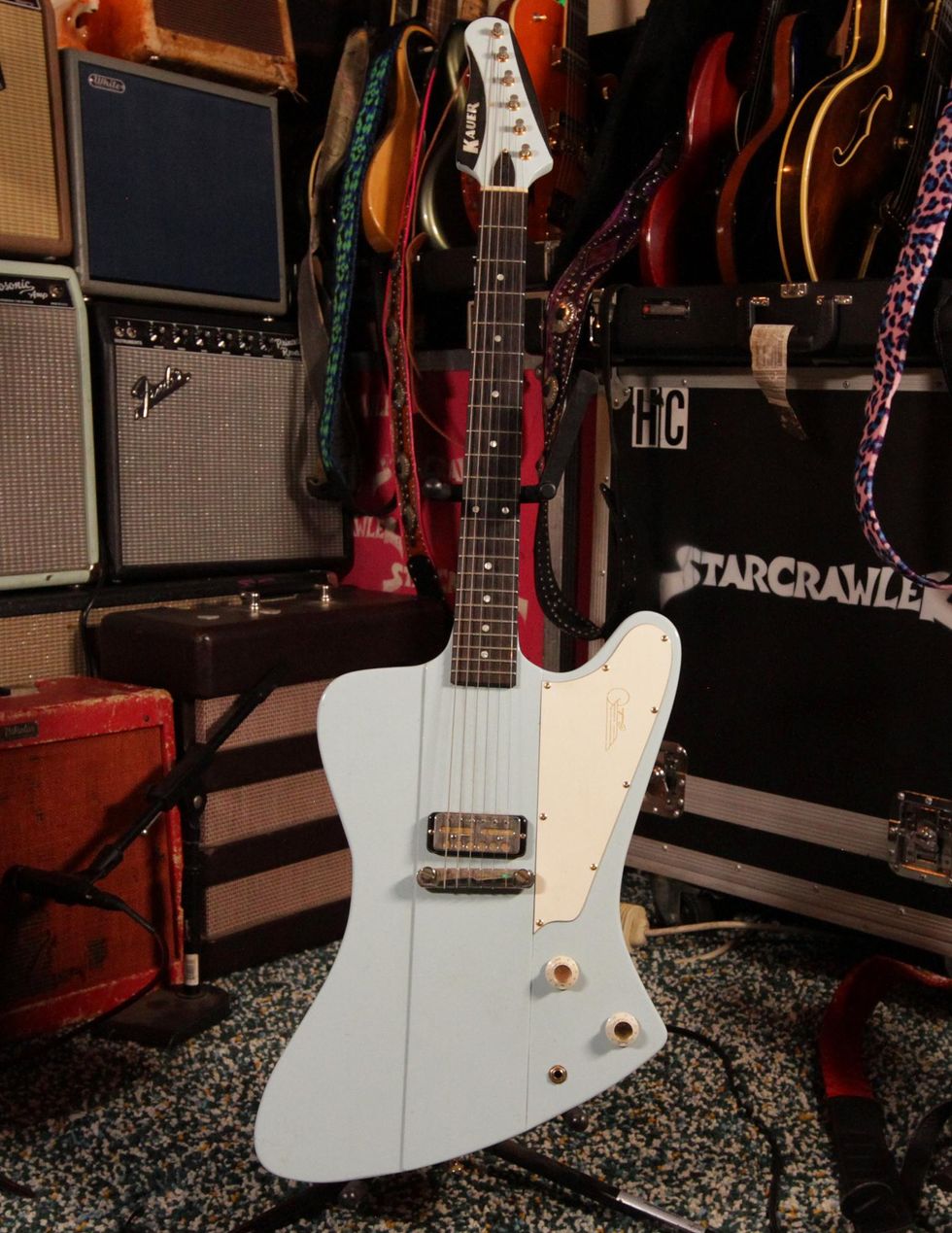
If you share a house with another guitarist, you know where to go looking for your instruments when they go missing. Cash and his father play tag with this custom Kauer Banshee that howls with a single Lollar.
1966 Gibson SJN Country Western
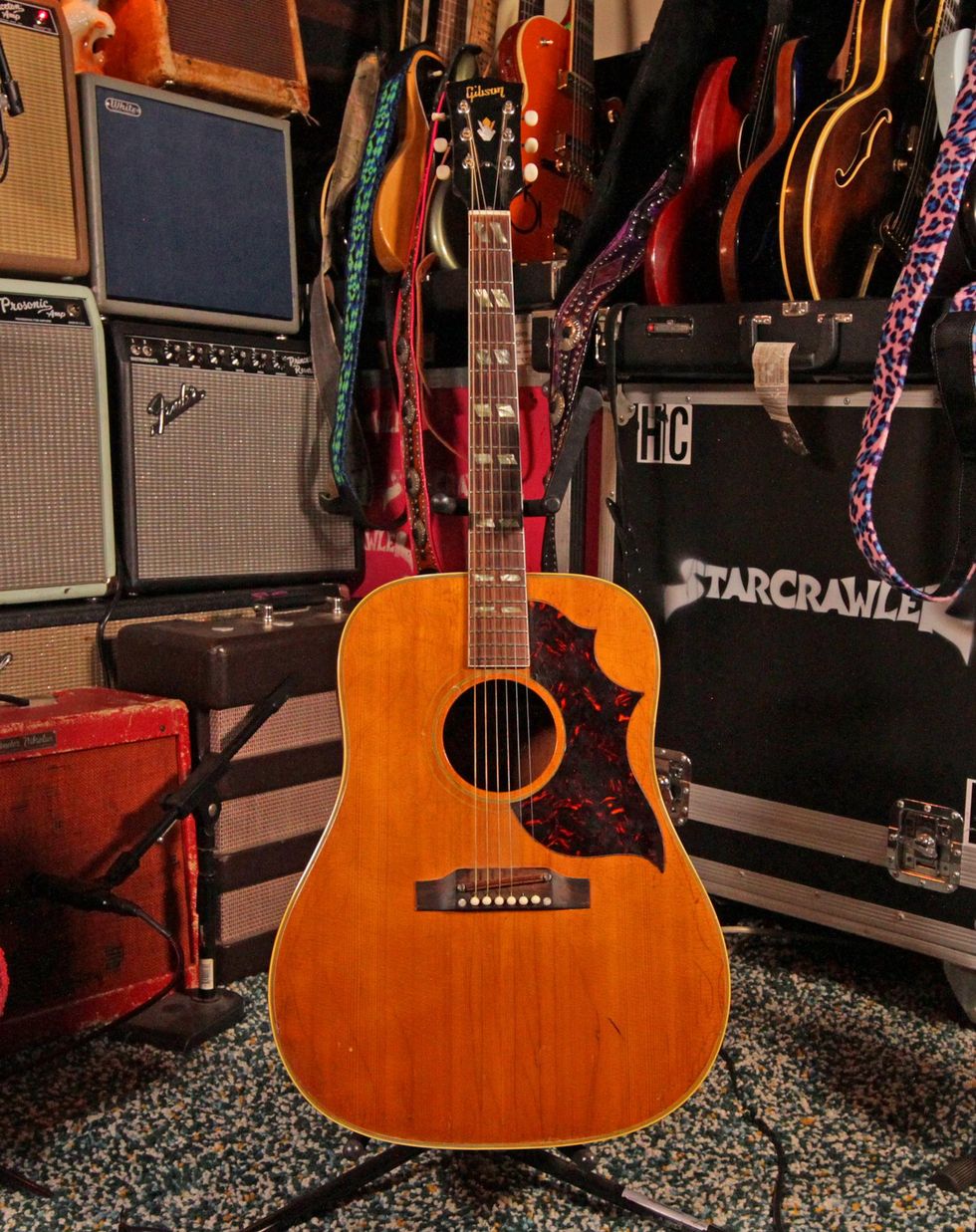
Prior to the quarantine, Cash didn't have a suitable acoustic. And your roommates and neighbors can only take so much noise, so he scooped this 1966 Gibson SJN Country Western. Now it's one of his favorites: "Every time I sit down with it, I feel like I'm getting somewhere."
1950s Gibson LG-1
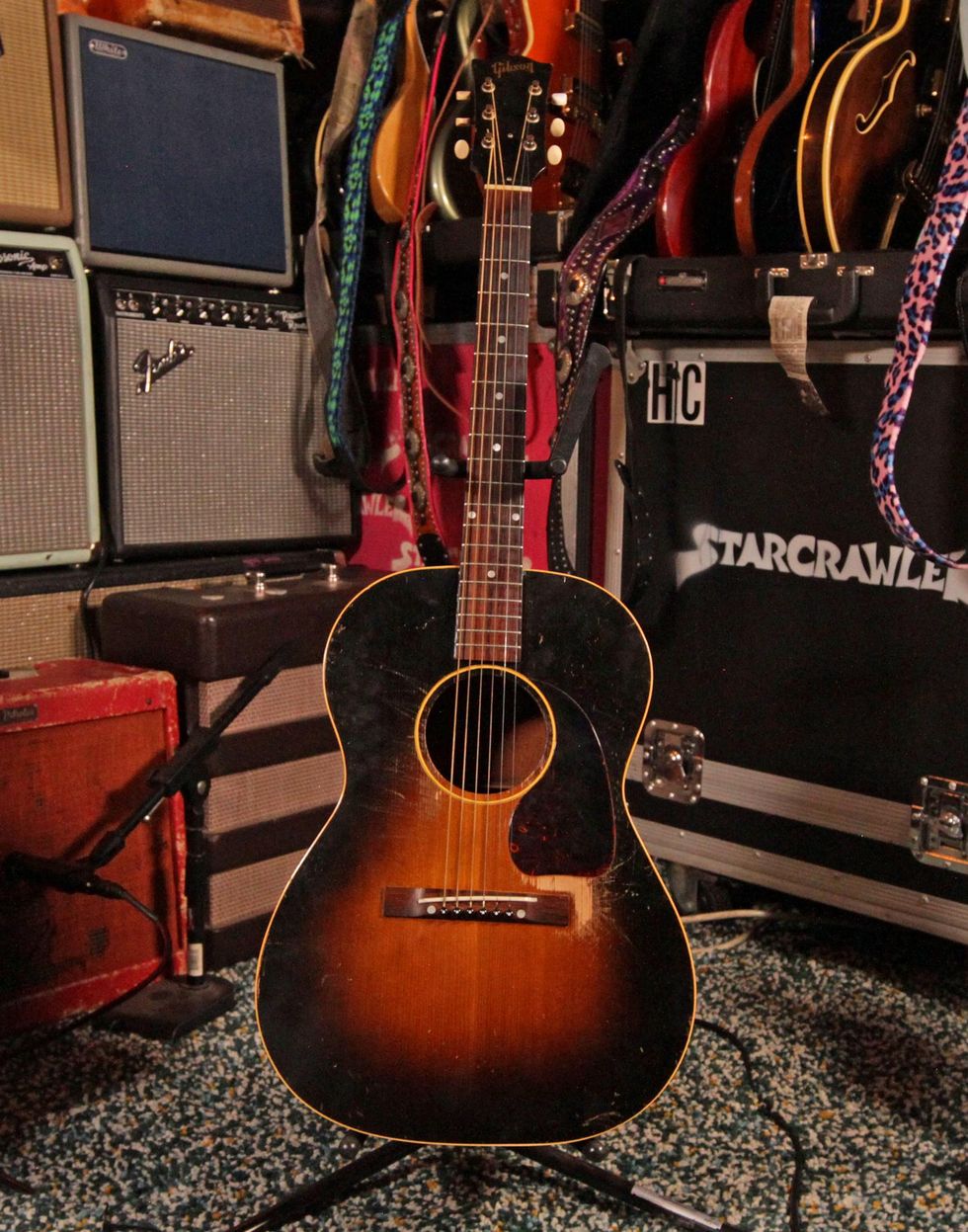
Cash's friend (and guitar sleuth) "fenderfinder" helped him land this 1950s Gibson LG-2.
Fender American Acoustasonic Jazzmaster
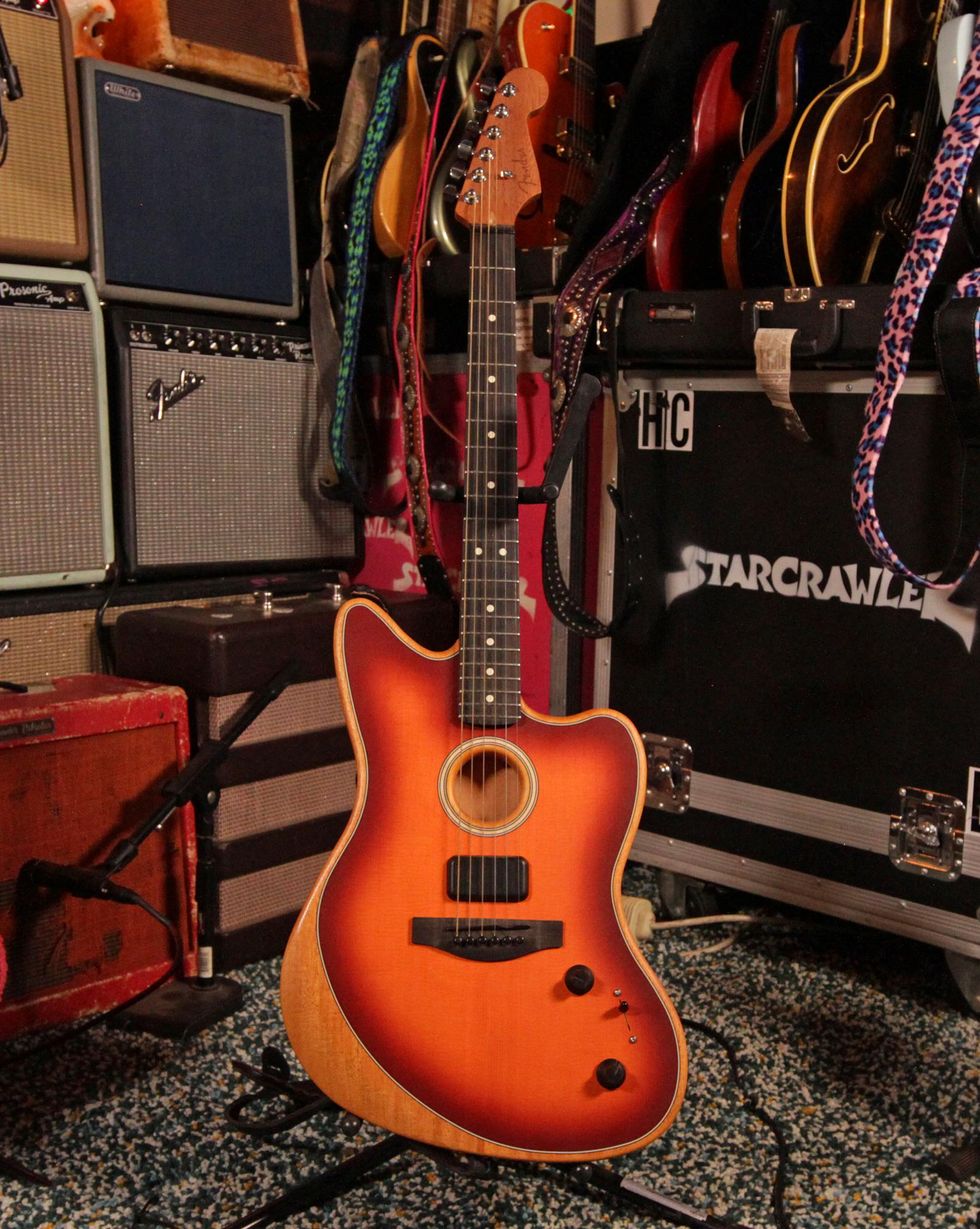
Originally a skeptic of the acoustic-electric hybrid, but after spending some time with the Fender American Acoustasonic Jazzmaster, Henri's a believer. He's enjoyed blending the acoustics and dialing up some Weezer-y dynamics.
Henri Cash's Wall of Amps
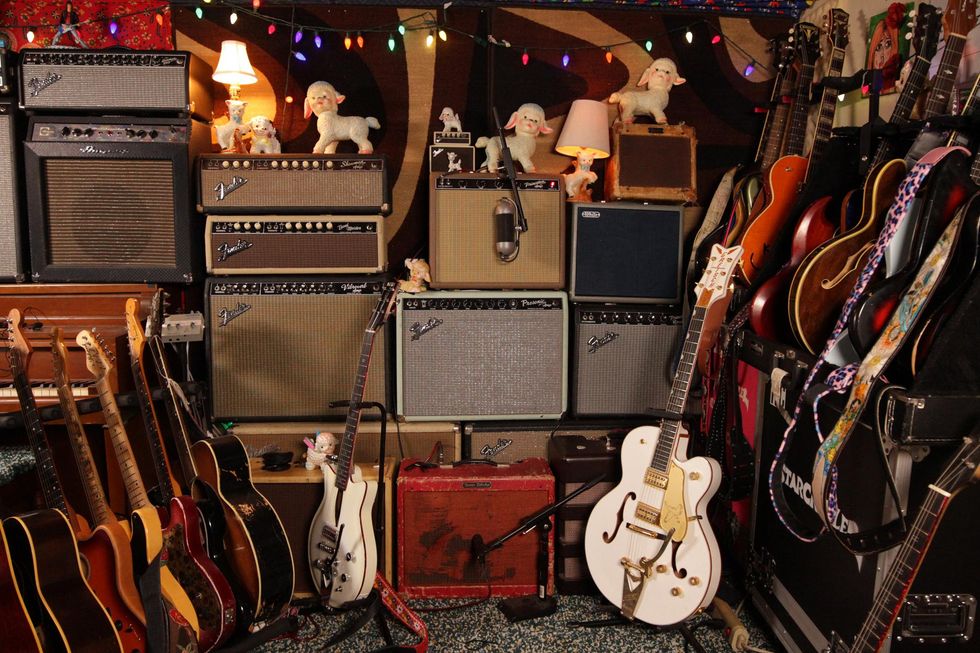
"Sound guys usually hate me," goofs Cash. "I typically tour with a Showman, Bandmaster, and Vibroverb … but they're only on the two or three!" For much of quarantine and this Rundown, Henri plugged into a Fender '62 Princeton Chris Stapleton Edition and a 1959 Fender Vibrolux that an '80s punk painted red.
Henri Cash's Pedalboard
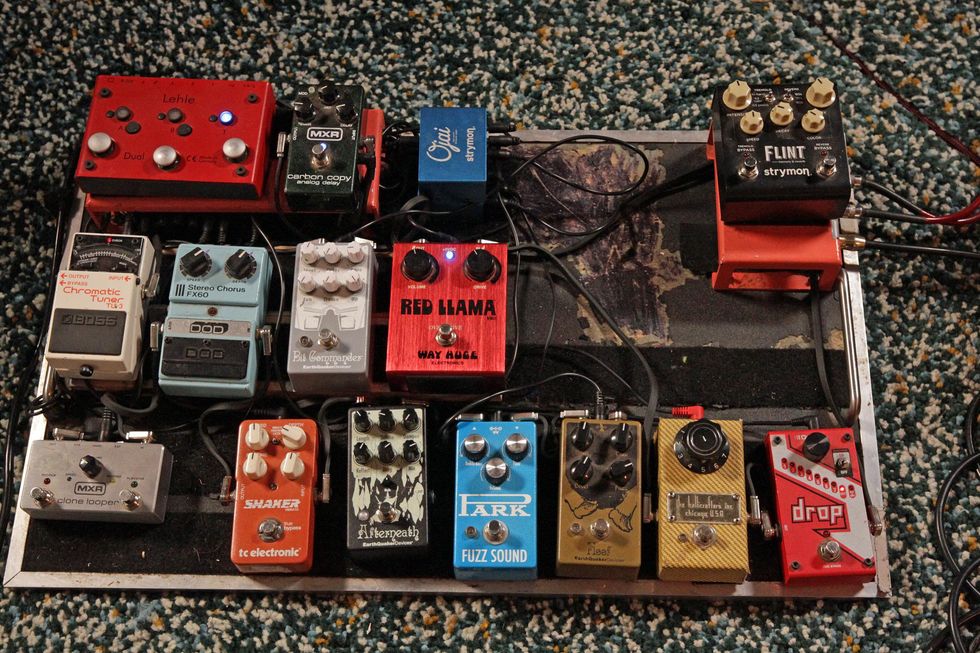
Most of Henri's pedals fit into one of two categories: mayhem and movement. The wild bunch includes a trifecta of EarthQuaker Devices (Bit Commander, Hoof, Park Fuzz Sound), R2R Electric One Knob Treble Booster, and DigiTech Drop. And for the some subtle gruff, he's got a Way Huge Red Llama. The modulation and time-based boxes are a MXR Carbon Copy, Strymon Flint, DOD FX60 Stereo Chorus, TC Electronic Shaker, and EQD Afterneath. A MXR Clone Looper is a practice tool, Strymon Qjai powers his pedals, a Boss TU-3 Chromatic Tuner keeps his guitars in check, and a Lehle Dual SGoS Amp Switcher controls the Fenders.




![Devon Eisenbarger [Katy Perry] Rig Rundown](https://www.premierguitar.com/media-library/youtube.jpg?id=61774583&width=1245&height=700&quality=70&coordinates=0%2C0%2C0%2C0)
























































